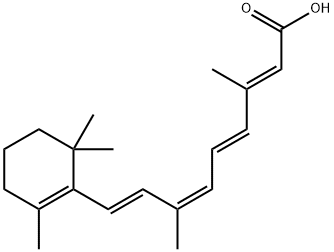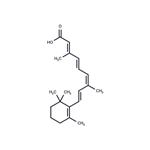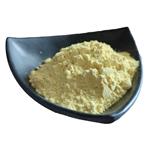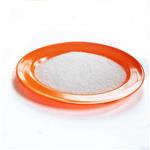Alitretinoin was introduced in the US for the topical treatment of
cutaneous lesions in patients with Kaposi's sarcoma (KS), the most frequent
malignancy observed in AIDS patients. It is a derivative of 9-cis-retinoic acid (9-
cis-RA) identified as an endogenous hormone in mammalian tissues. Alitretinoin
binds to all isoforms of the intracellular retinoid X (RXR) and retinoid A (RAR)
receptors thus inducing cell differentiation, increasing cell apoptosis and
inhibiting cellular proliferation in experimental models of human cancer. In an
international phase III trial in patients with KS, 42% of 82 patients treated with
0.1% gel formulation experienced complete or partial responses cf 7% for
controls. Alitretinoin is the first topical therapy for KS and is expected to be a
new option to its traditional management.
9-cis-Retinoic acid is a vitamin A analog that inhibits cell proliferation and induces cell differentiation. 9-cis-Retinoic acid is an inhibitor of Cox-2 and an activator of RAR α, RAR β, RAR γ and RXR.
An endogenous retinoic acid isomer, which is capable of binding to both retinoic acid receptors (RAR) and retinoid X receptors (RXR). A biologically active ligand for members of the RAR and RXR subfamilies, implying that it may play a critical role in regulating retinoid-responsive pathways.
ChEBI: A retinoic acid in which the exocyclic double bonds have 7E,9Z,11E,13E geometry.
Alitretinoin (Panretin) is a naturally occurring endogenous
retinoid that binds to and activates all known
retinoid receptors (both RARs and RXRs). It is approved
for the topical treatment of cutaneous lesions of
Kaposi’s sarcoma. Most patients have local irritation
while using alitretinoin gel; however, the irritation
rarely necessitates discontinuation of therapy.
Ligand for both the retinoic acid receptor (RAR) and the retinoid X receptor (RXR) that act as transcription factors to regulate the growth and differentiation of normal and malignant cells.



